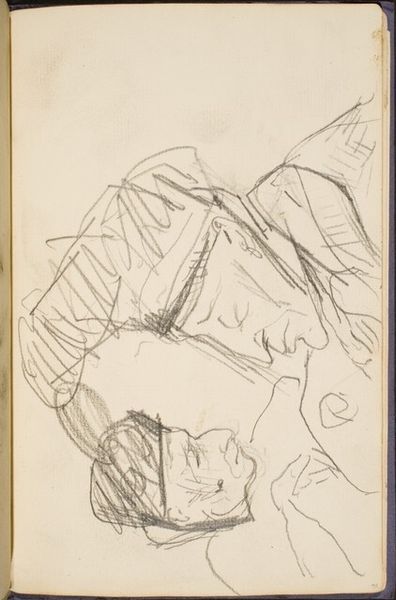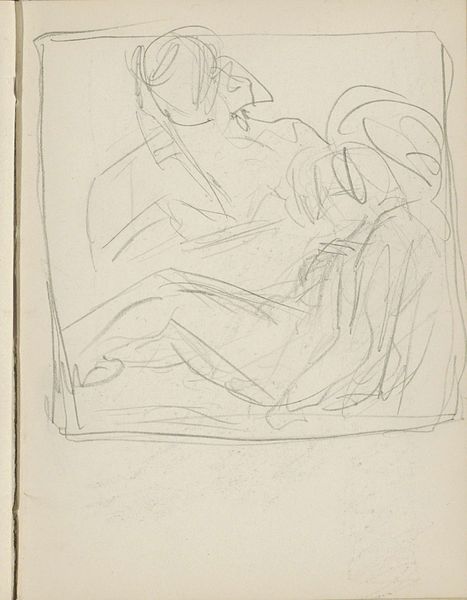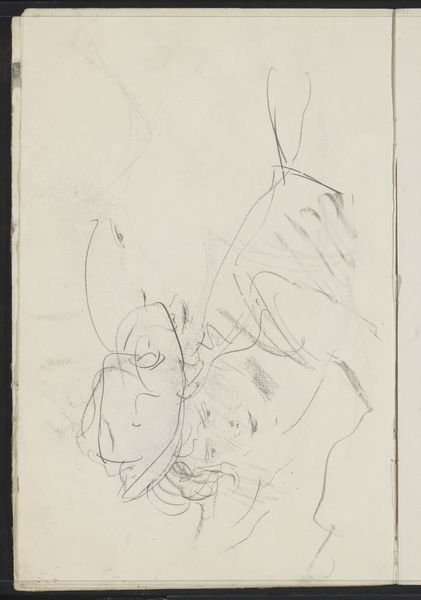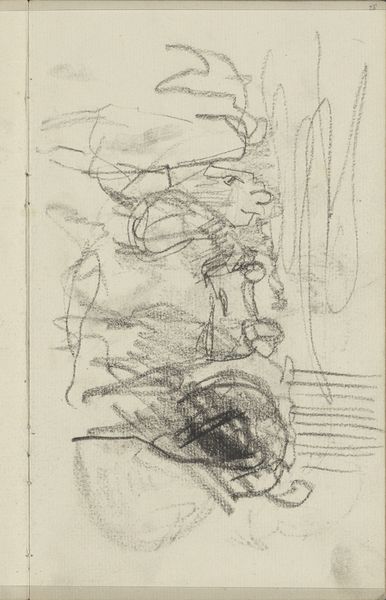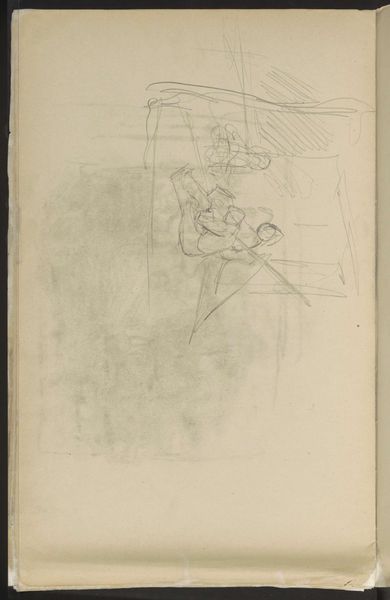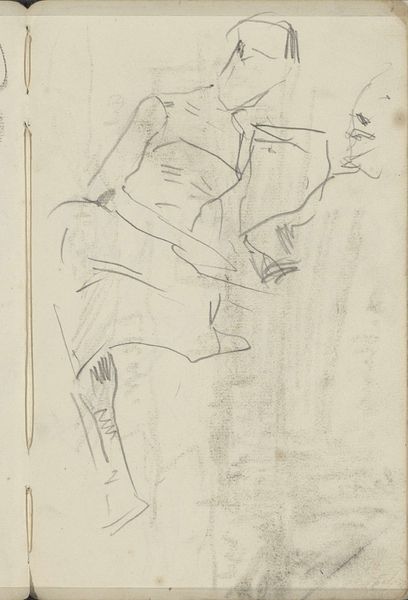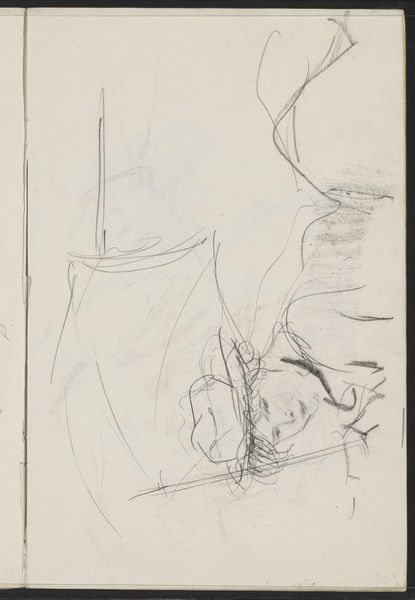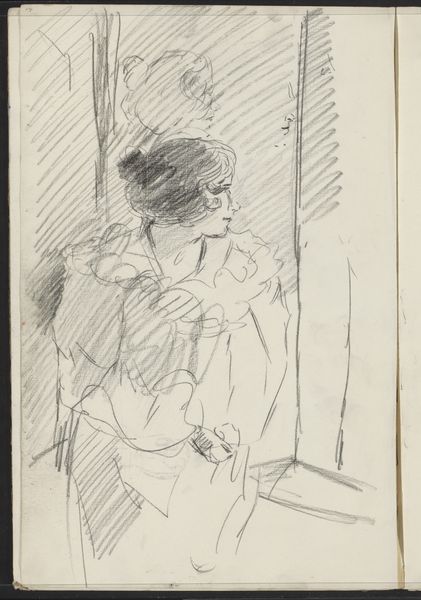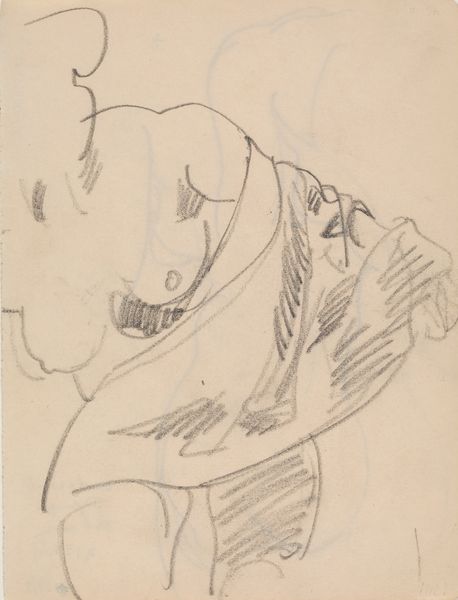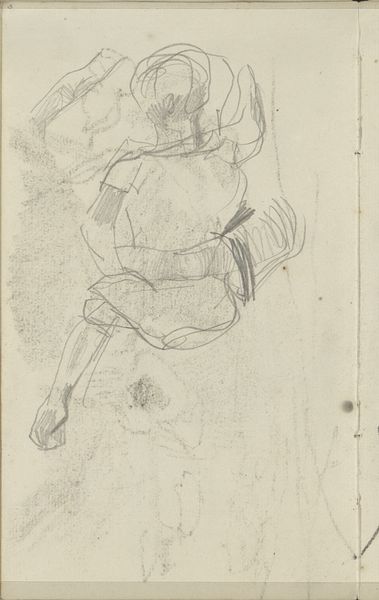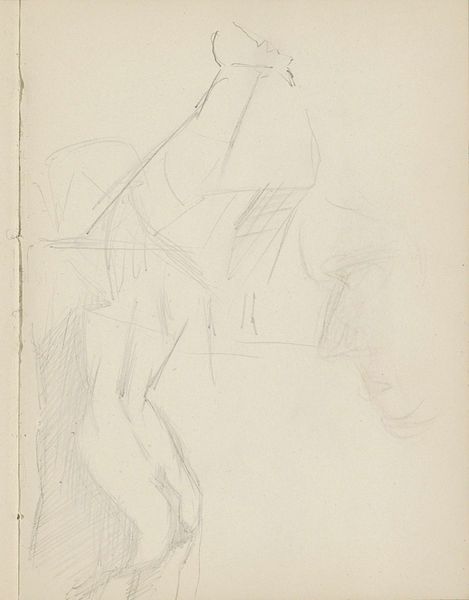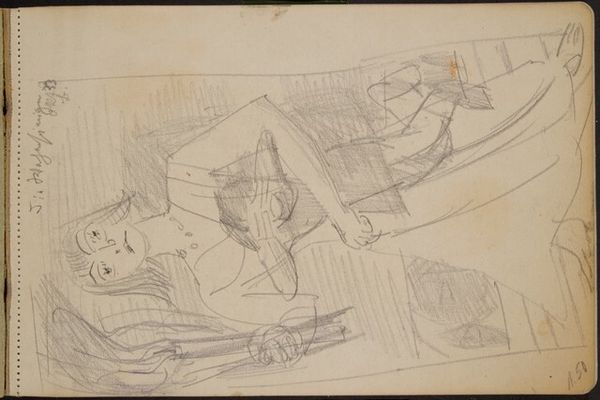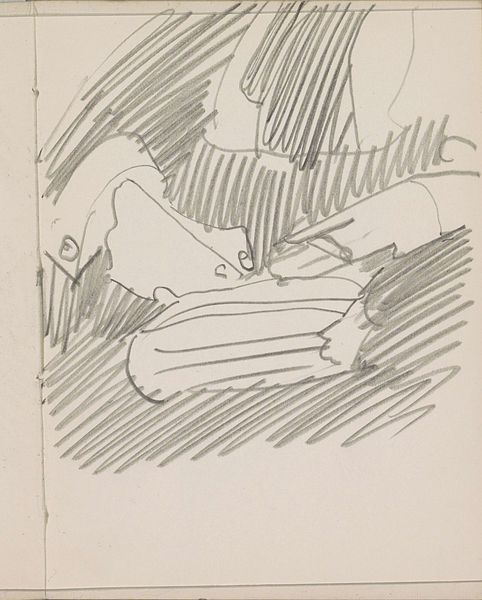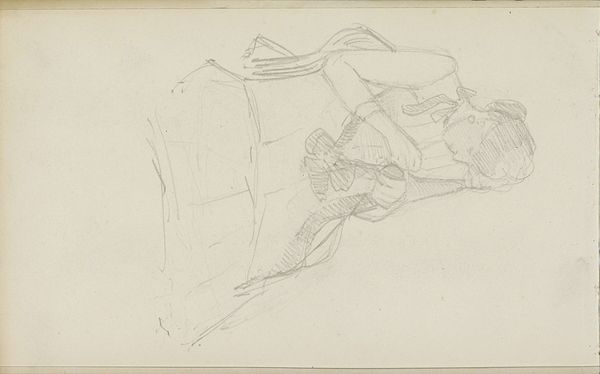
Copyright: Rijks Museum: Open Domain
Curator: Welcome. Before us is “Twee tegenover elkaar gezeten vrouwen,” or “Two Women Seated Opposite Each Other,” a pencil drawing, circa 1916, by Reijer Stolk, housed here at the Rijksmuseum. Editor: It strikes me as immediately intimate and melancholic, like catching a private moment frozen in time. Curator: Indeed. Observe the artist's choice to render the subjects with light, tentative lines. There’s a distinct lack of rigidity, which fosters a sense of immediacy. Semiotically, the sketch emphasizes process over product. Editor: Precisely. But let’s consider this work within its historical context. Early 20th century, the shadow of war, social upheaval… I wonder, were these women experiencing loss? What narratives are being intentionally or unintentionally revealed through their positioning relative to one another? Their lack of distinct facial features hints at universality—they could represent anyone, women experiencing similar feelings across Europe at that moment in time. Curator: You touch on a key aspect. The absence of detailed faces forces us to focus on the composition itself. Notice how Stolk uses hatching to define form and space? The cross-hatching particularly emphasizes areas of shadow, adding depth to a seemingly simple sketch. We see the subject in terms of angles. The line work really provides insight into artistic thinking. Editor: Agreed. And that technical approach, the very lines he uses, I argue that the lines embody the precariousness of the era and fragility of connection. This piece acts as a reminder of shared, albeit often invisible, female experiences during wartime, speaking directly to notions of empathy and shared history. Curator: I find that to be insightful. This exploration of “Twee tegenover elkaar gezeten vrouwen” illuminates the delicate balance between technique and contextual understanding. Editor: Yes. It really forces us to question our assumptions and open ourselves up to a fuller appreciation of the human experience in art.
Comments
No comments
Be the first to comment and join the conversation on the ultimate creative platform.
